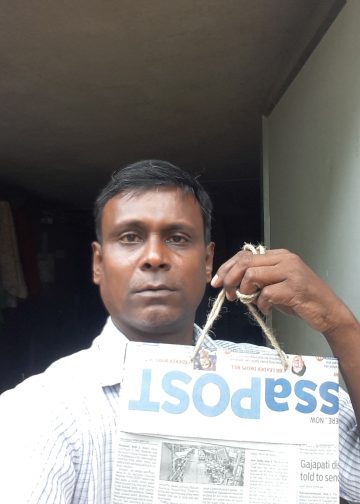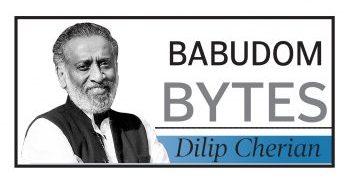SN Misra
The celebration of two years of NDA government masks its lack of interest in evolving an effective educational policy. The government hasn’t come out with any information regarding the recommendations of the committee chaired by TSR Subramanian.
But reliable insider information suggests the committee has focused on improving quality of school and college education and employability, besides restructuring UGC and AICTE to improve the quality of research. It has also highlighted that NAAC assessments were unprofessional and regressive.
Several committees and significant judgements of the Supreme Court have preceded the Subramanian committee. The Kothari Commission (1966) evolved the 10+2+3 scheme and emphasised vocationalisation and improvement of productivity by “treating science as a basic component in education and improving research in science and technology”.
It strongly recommended a neighbourhood system that would encourage inclusive education of the poor and the marginalised without “social and religious segregation”.
The national policies on education under Rajiv Gandhi in 1986 and PV Narasimha Rao in 1992 gave greater thrust to ‘access and equity’ of education and to facilitate inter-regional mobility. However, the political will to ensure equal access to free education was triggered by a Supreme Court judgement which chastised the government for its failure to implement Article 44 and provide free primary education by 1960.
Right to Education (RTE) was included as a fundamental right under Article 21A in 2002. It has ensured that all children from the age of 6 to 14 are provided free education through the Sarva Shiksha Abhiyan. It is to the credit of the RTE Act 2009 that almost 97 per cent of children go to school, irrespective of gender, caste and religion.
However, the independent findings of the NGO Pratham reveal that only 58 per cent of children enrolled in Classes III to V can read a Class I text, and only 47 per cent are able to do a simple two-digit subtraction. The report says only 37 per cent of children enrolled in Class IV or V can read fluently and that reading and mathematics skills of Class IV pupils in India’s top schools are below international average.
Such comprehensive reports are not available for higher education, though, despite the proliferation of private universities over the past decade. The country’s investment in research and development is a paltry 0.9 per cent of the GDP as against 4 to 5 per cent by developed countries and emerging market economies such as South Korea, Israel and China.
The Kothari Commission underlined the need to increase allocation for education to 6 per cent of the GDP. It has remained at 3 per cent for the past five decades despite the increased expenditure on free education through SSA.
Understandably, the government has significantly reduced allocation to universities and research institutions. The professor Yashpal vs Government of Chhattisgarh (2004) case had shown that private universities of Chhattisgarh were paying scant attention to quality and were working solely for aggrandizement of funds.
The Supreme Court observed in the case that “it is the responsibility of the Parliament to ensure that proper standards are maintained in institutions for higher education and research throughout the country and also uniformity in standards is maintained”.
It also emphasised that the UGC should ensure that public and private universities maintain such quality standards so that the sanctity of a “degree” is ensured under Section 3 of UGC Act 1956. It also underlined the fact that education was a “merit good” which does not brook commercialisation.
While the court had highlighted the importance of the UGC as the sentinel for maintaining quality, the Knowledge Commission (2009) strongly recommended that the role of the UGC be reduced and that an independent regulatory authority for higher education, or IRAHE, be established.
The Narayan Murthy Committee Report (2012), too, strongly supported the Knowledge Commission recommendation to provide autonomy to universities and the setting up of centres of excellence such as technology parks and knowledge clusters. The report pitched for creation of 20 national knowledge clusters through public private partnership at an estimated cost of `4,000 crore over five years.
The TSR Subramanian committee has largely echoed the sentiments of these two committee reports. The free market spirit of neo-liberal India appears to have abdicated the government’s responsibility in higher education. India Skills Report 2014 revealed that at the then pace of skilling, the country was set to face a skill gap of 75-80 per cent across industrial sectors.
Now Prime Minister Narendra Modi has set a steep target of providing vocational training to 500 million people by 2022. But the India Skills Report 2016 shows that only 2.5 per cent people are having vocational training as against 68 per cent in UK and 75 per cent in Germany.
The last two budgets have reflected the apathy and tokenism of this government. While announcing establishment of IITs, IIMs and Navodaya Vidyalayas, it has clearly overlooked the kernel of the problem with education, that is, quality.
ASER (2015) report showed that poor numeracy and English language skills, and high drop-out rate among government school students were driving 30 per cent of parents to private schools paying exorbitantly high fees.
This puts children of poor- and low-income families at a distinct disadvantage as they are fleeced by private schools.
The Oslo Summit (2015) underscored the importance of quality education and inculcating a proper value system in primary education systems of developing economics. The country has to look beyond access to education to improve basic infrastructure and quality of teachers in government schools. It has to commit a higher budget to education — a point constantly made by Professor Amartya Sen.
This will form the scaffolding that would help improve employability. The policy paralysis of earlier governments is being supplanted by policy vacuity today. By putting the Subramanian Committee report on the back burner, the NDA government is reflecting a sclerotic mindset.
The author, a former joint secretary with the Centre, teaches constitutional law.






































